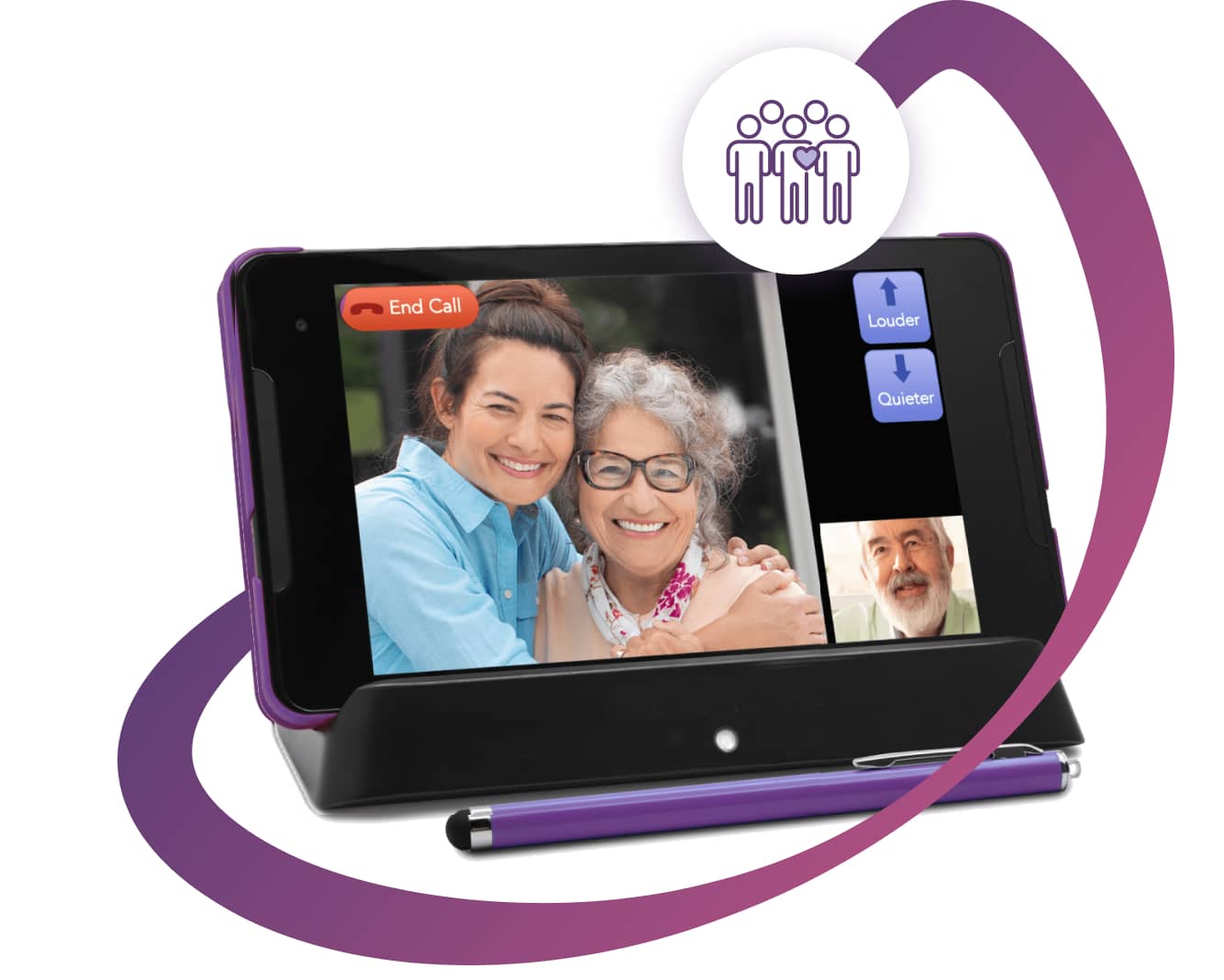HaloPad – Keeping Loved Ones Connected & Independent
The HaloPad is an easy-to-use, secure tablet designed specifically for older adults, helping them stay connected with family and engaged with the world—without the complexity of modern technology.

A New Way to Stay Connected
The HaloPad isn’t just a tablet—it’s a bridge between generations, designed to keep older people engaged, effortlessly connected to their family and friends. With a simple, intuitive interface, the HaloPad removes the frustration of traditional tablets, while the Circle of Care app allows loved ones to share moments, manage content, and provide support—no matter where they are in the World.


Benefits
Secure Voice &
Video Calls
Photo
Sharing
Safe &
Secure Emails
Local News
& Radio
Personalised
Content
No Passwords,
No Ads, No Confusion
How it works
The HaloPad is designed for effortless connection. No complicated setup, no confusing menus—a simple, stress-free way to stay in touch.
Switch On & Connect
The HaloPad arrives pre-configured and ready to use straight out of the box. Contacts will be pre-loaded and you’re all set to go!
Stay in Touch
Make video calls, voice calls, send emails, and share photos with family and friends in just a few taps. Only trusted contacts can connect, ensuring a safe and secure experience.
Engage & Enjoy
Access news, radio, and personalised content based on hobbies and interests. Whether it’s reading local news, listening to favourite radio stations, or enjoying family photos, HaloPad keeps users connected to what matters most.
– Sara, Dublin
– Mark, Kilkenny
– Lisa, Galway
Pricing
Simple, Transparent Pricing – No Hidden Fees.
HaloPad tablet cost
Recurring membership
Get in touch
Our team is available 24/7 to support you; whether it’s finding the right plan or learning more about how HaloPad can help your family stay connected. Please fill out the form and we will be in touch as soon as possible
FAQs
Looking for more information on HaloPad? Check out our commonly asked questions below.
-
No, while you can use WiFi, the HaloPad + Sim package comes with built-in 4G connectivity, so it works right out of the box— no setup, no extra bills.
-
Yes, using HaloPad app, the Circle of Care admin can update contacts, manage calendar events, and even adjust settings to ensure a safe and engaging experience.
-
Absolutely! The HaloPad was designed specifically for older adults, with large buttons, clear navigation, and no confusing pop-ups or ads.
-
Yes, only trusted, approved contacts can call or email the HaloPad. No spam, no telemarketers, no scams—just secure communication.
-
Our 24/7 Care Hub is always available to assist, ensuring a worry-free experience for both users and their families.
-
The HaloPad comes with everything needed to get started: the pre-configured tablet, a wireless dock for easy charging, built-in 4G connectivity (optional), and access to the HaloPad Circle of Care App for family members.
-
The HaloPad is design for ease-of-charge, no fiddley connections, simply place it on the charging stand and it will start to charge automatically.

